12 Fascinating Facts About Pufferfish: The Inflating Intimidators

Ever wondered about those quirky underwater creatures that puff up like balloons? Pufferfish, with their unique defense mechanisms, are nothing short of fascinating. Let’s dive into some lesser-known and intriguing facts about these spiky, inflatable fish.
From their distinctive appearances to their surprising behavior, these captivating tidbits will give you a whole new appreciation for the underwater world’s inflating intimidators.
1. Toxic Terrors
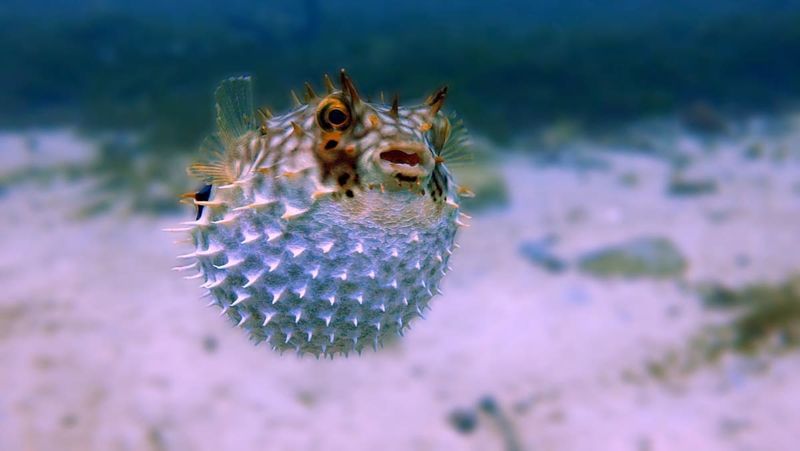
Many pufferfish species contain tetrodotoxin, a deadly poison. It’s lethal to predators and even humans if consumed improperly.
Despite this, it’s considered a delicacy in Japan, known as fugu. Chefs train extensively to serve it safely. Talk about living on the edge!
2. Colorful Camouflage Artists
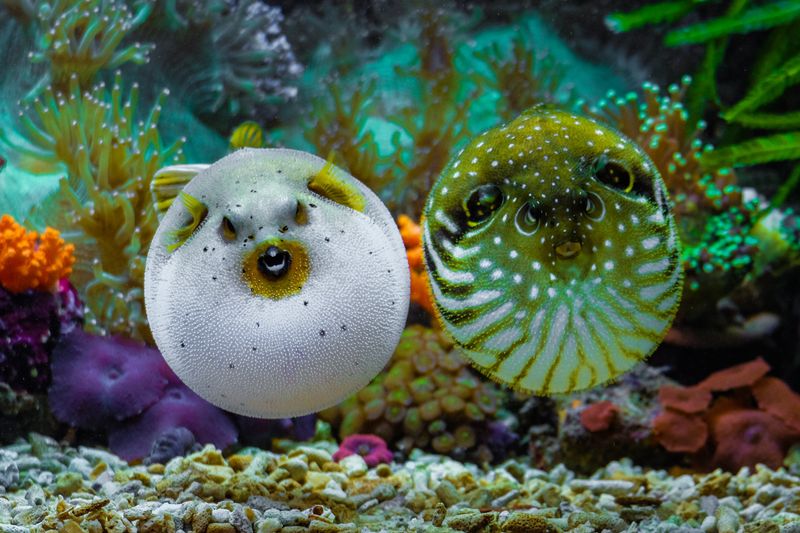
Pufferfish come in a variety of colors and patterns, offering them perfect camouflage. This helps them hide from predators and sneak up on prey.
Their vibrant hues can also serve as a warning of their toxicity. They’re both beauty and the beast of the ocean!
3. The Inflating Defense Mechanism
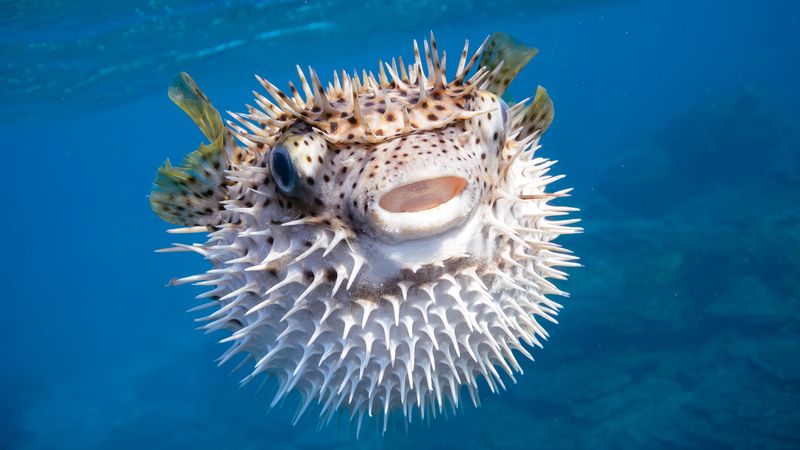
Pufferfish can inflate to several times their normal size by gulping water or air. This transformation not only makes them bigger targets but also helps them ward off predators.
Their spiky skin adds another layer of defense when inflated. Nature’s way of saying, “Back off!”
4. Unique Dental Structure
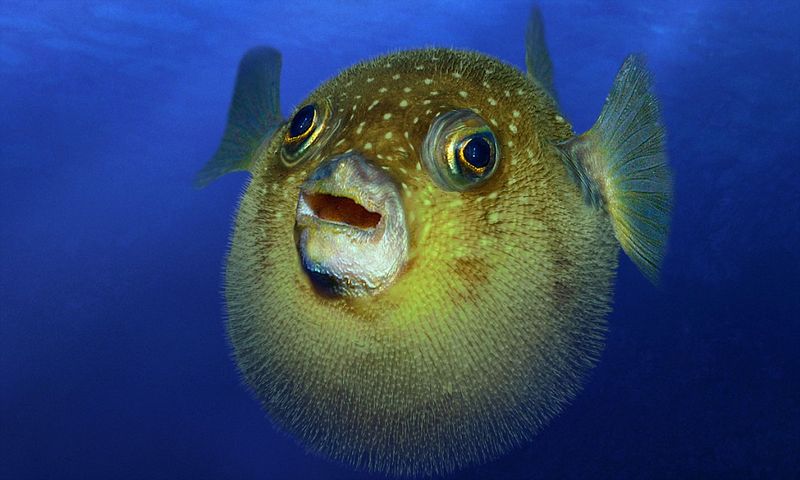
Pufferfish have a set of teeth fused into a beak-like structure. This unusual dental setup allows them to crush hard shells of prey like clams and crabs.
They’re the ocean’s natural nutcrackers, feasting on marine delicacies. Their teeth grow continuously, a unique adaptation to their diet.
5. Slow And Steady Swimmers
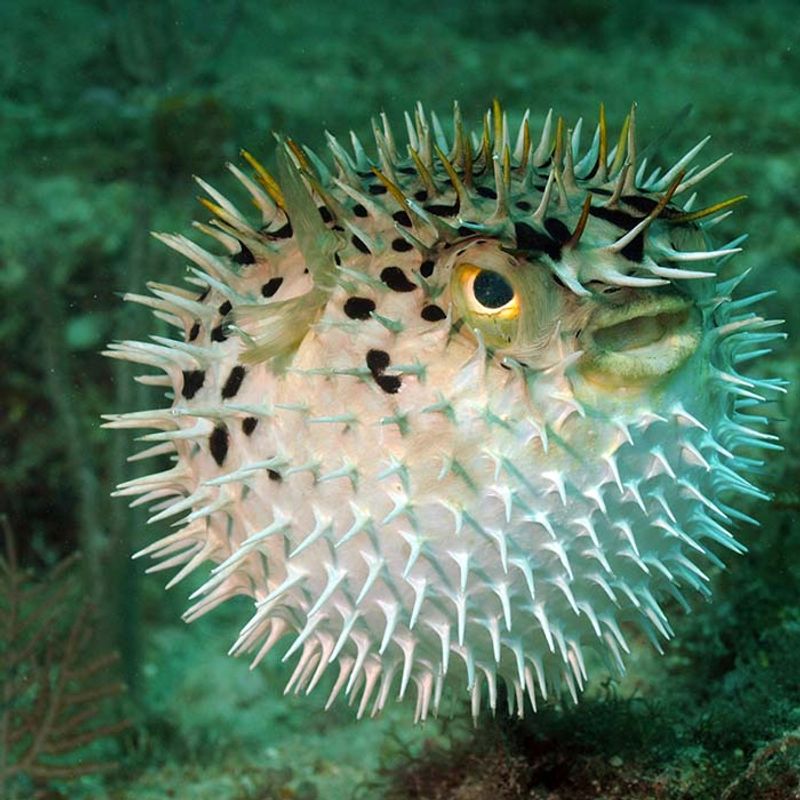
Pufferfish aren’t known for their speed. Their leisurely swimming style is a stark contrast to their rapid inflation ability.
This slow pace helps them conserve energy, but they’re always ready to puff up when threatened. It’s the ocean’s version of slow and steady wins the race.
6. Varied Ecosystem Residents
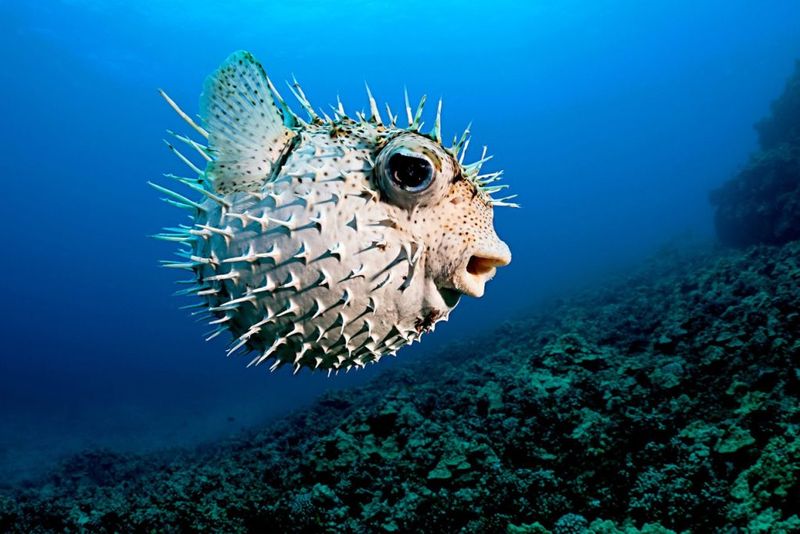
Pufferfish inhabit diverse environments, from coral reefs to mangroves and even freshwater rivers. This adaptability allows them to thrive in various ecosystems around the world.
Whether in the vibrant coral gardens or murky riverbeds, pufferfish make their presence known.
7. The Social Solitaires
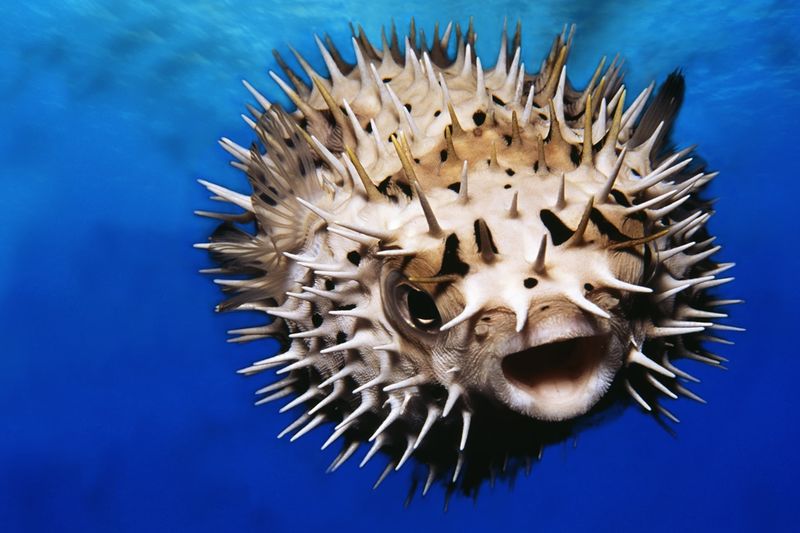
Unlike some fish that swim in schools, pufferfish are typically solitary creatures. They enjoy their alone time, exploring the ocean depths at their own pace.
This solitary nature allows them to focus on their unique survival strategies without the distraction of a crowd.
8. Intriguing Courtship Rituals
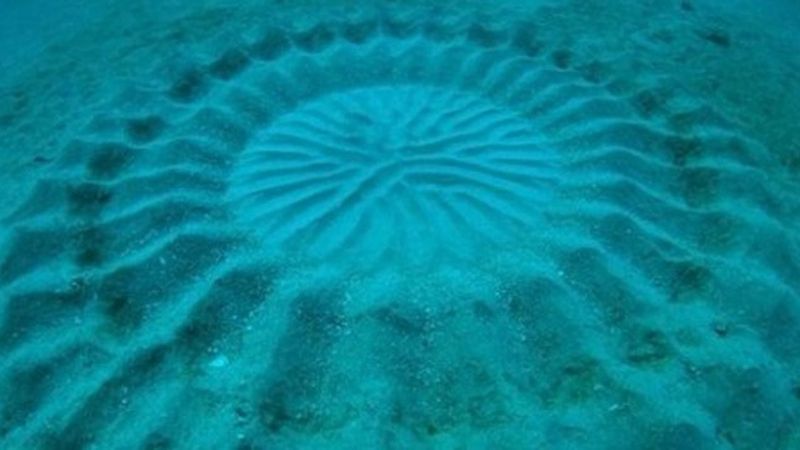
Pufferfish are known for their fascinating courtship displays. Males sometimes create intricate patterns in the sand to attract females.
This artistic endeavor is a testament to their creativity and persistence. It’s nature’s own version of an elaborate marriage proposal.
9. A Global Presence
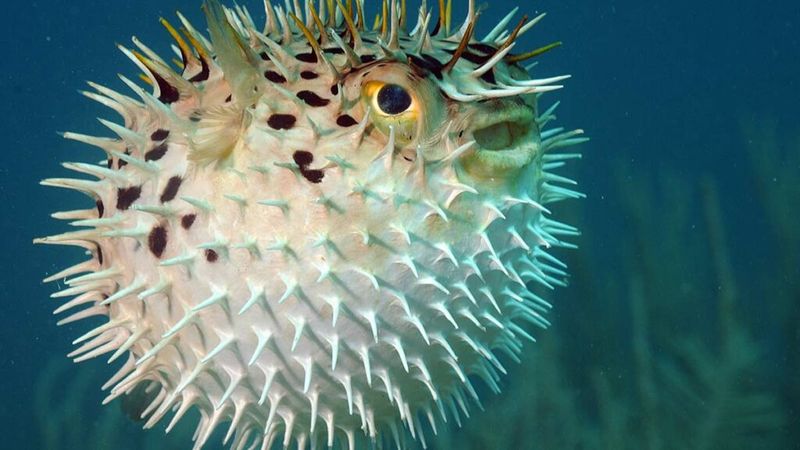
Pufferfish are found in oceans worldwide, with over 120 species identified.
They thrive in various climates, from warm tropical waters to cooler temperate zones. This global distribution showcases their incredible adaptability and resilience.
10. Ancient Survivors
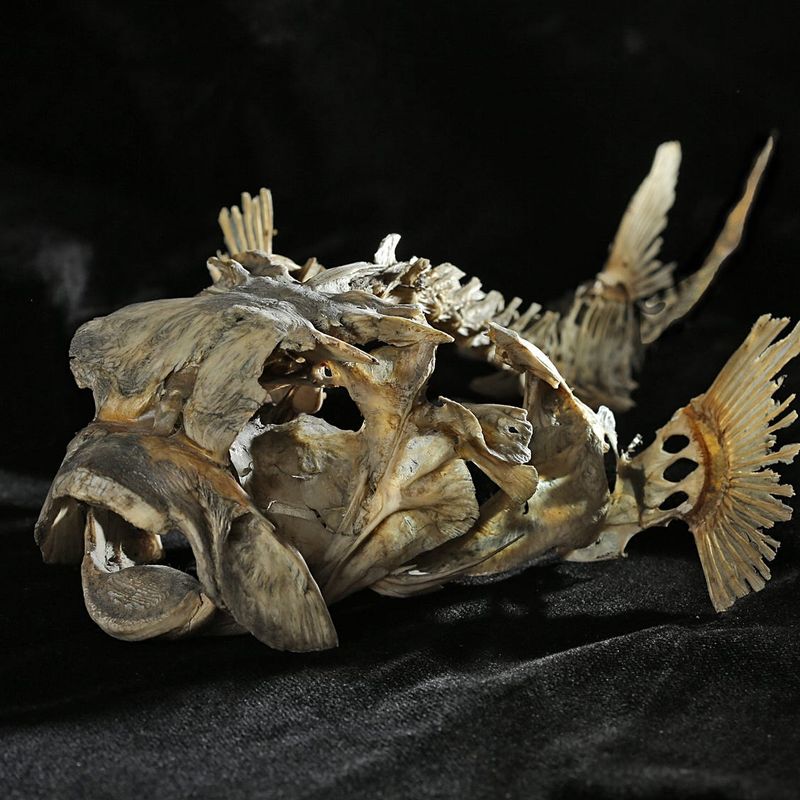
Pufferfish have been around for millions of years, surviving through significant changes in the planet’s oceans.
Their ability to adapt and evolve has allowed them to persist where others have perished. They’re living fossils, offering a glimpse into ancient marine life.
11. Natural Artists

Some male pufferfish are known to create beautiful sand circles as part of their mating display.
These intricate designs not only showcase their artistic skills but also play a crucial role in attracting a mate. It’s like an underwater art exhibition with love as the prize.
12. The Curious Quinoline
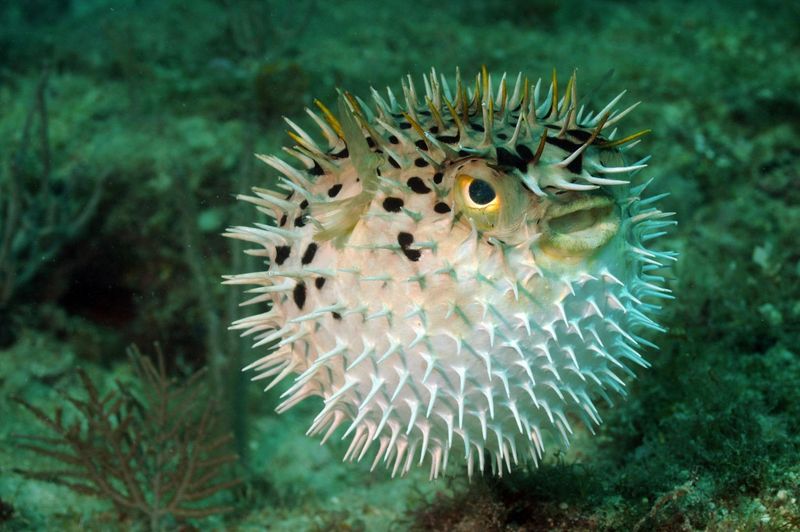
The toxin in pufferfish, tetrodotoxin, is one of the most potent known to science. Researchers study it for potential medical applications, despite its danger.
It’s a prime example of how nature’s deadly designs can lead to groundbreaking discoveries. Curiosity meets caution in the world of pufferfish.






